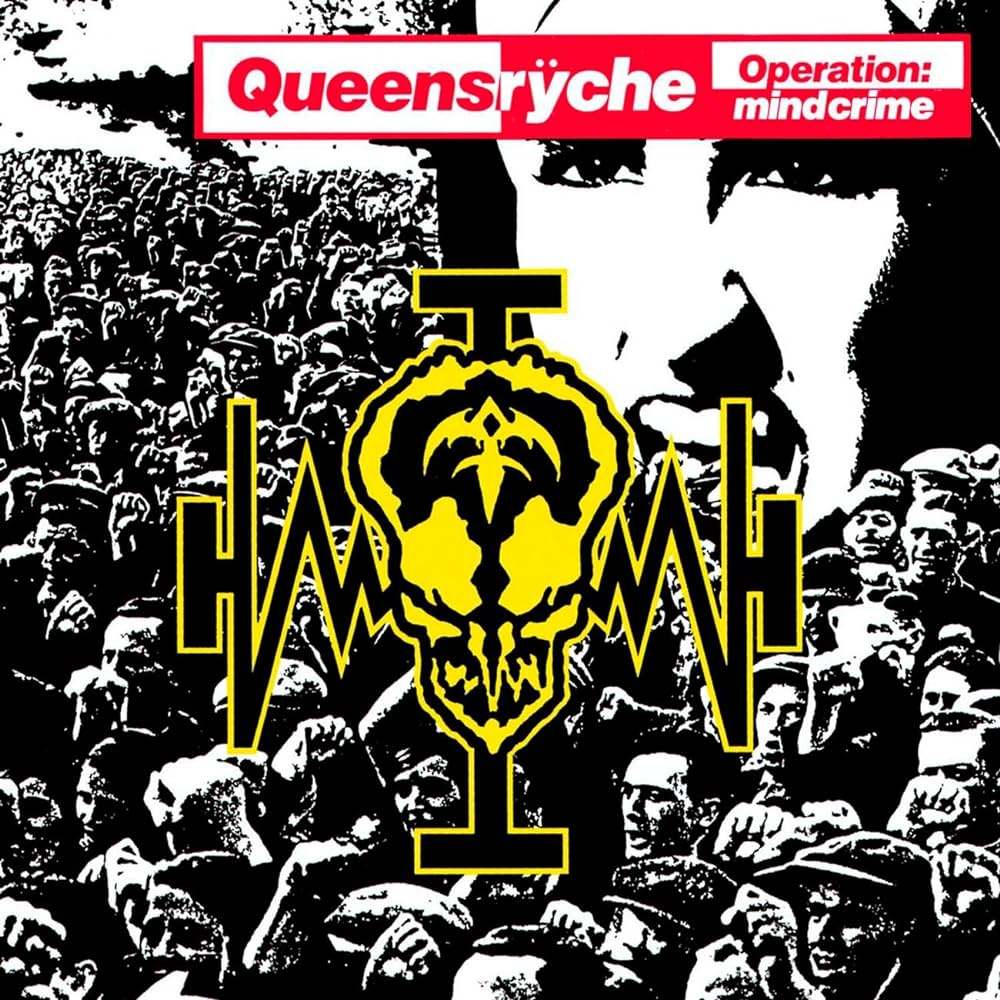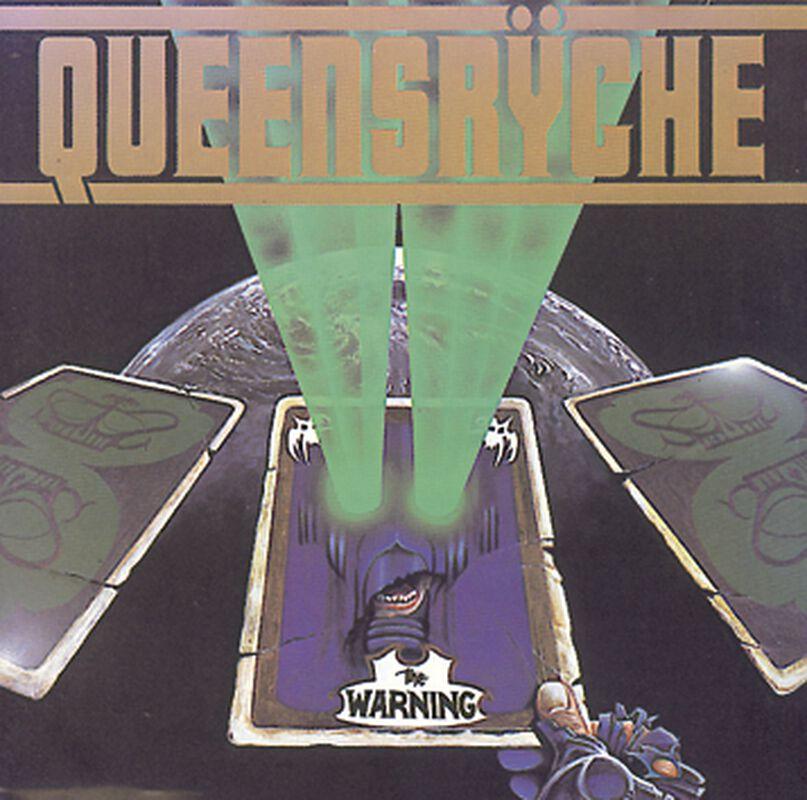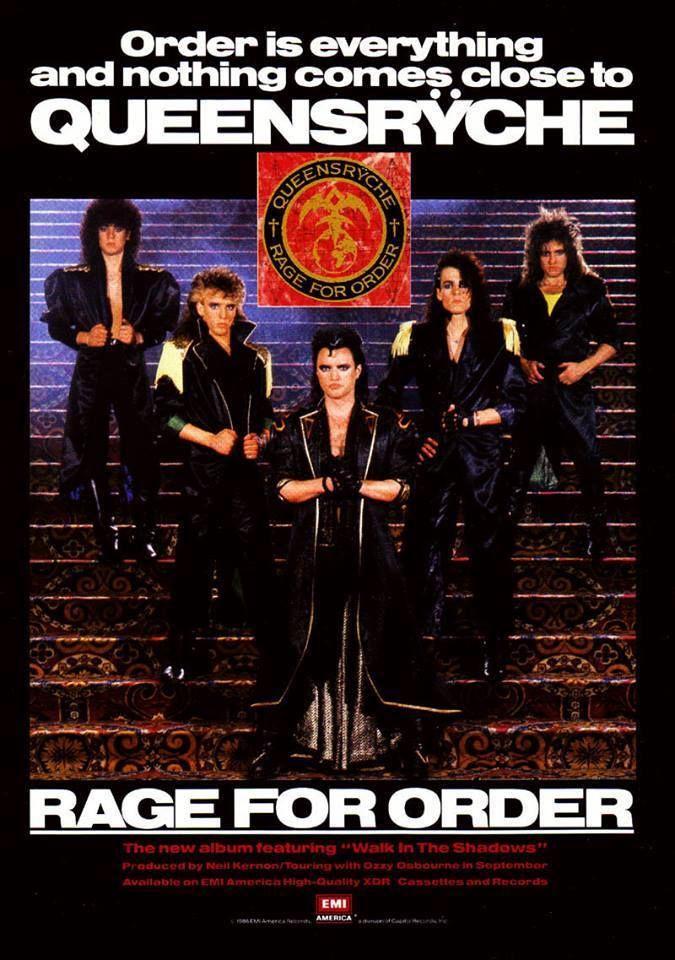I remember now. I remember how it started.
Grosse Pointe Woods, Michigan, sometime in the Year of our Lord 1990. I was 15 years old and a fan of all things metal and hard rock of the day. Bands like Aerosmith, Def Leppard, Motley Crüe, and Guns n’ Roses, with their lyrics about sex, drugs, and rock and roll were totally my jam. It was also the days when MTV still played music videos, “streaming” was not a word used in relation to anything, and the newest vessel for sonic consumption was the compact disc or CD. And we made mix tapes.
I'm a fool in search of wisdom...
It was in this context when one day after school while turning on MTV to unwind after another stupid day of 10th grade, I saw the music video for a song entitled “Empire” by a band called Queensrÿche (pronounced “Queen’s Reich”). I had seen them mentioned in metal magazines and CD catalogs but never heard a note.
When the video came on, as the title track single for their newest album, I was hooked. The lead singer stared into the camera like a beast with a terrifying bottom-lit glare. The guitarists hunched over in sinister silhouettes. And the drum set had chains hanging from it. The song was dark, urgent, and brooding, drawing attention to the grim realities of drugs and crime in inner cities rather than love in an elevator or pouring sugar on someone.
I felt like Russell Hammond in Almost Famous, ten years before that movie even existed, experiencing something different—something “real”—and one full year before popular music culture would smell more like flannel and teen spirit than Aqua Net and spandex.
Weeks later, another single and video would be released called “Best I Can.” Gritty, raw, and street-wise black and white silhouettes loomed on the screen. The singer folded his arms in a black t-shirt and glared at me again, the chains still swinging from the drum set. Who are these guys? I wondered.
And then came the drop. On the radio, while at my bedroom desk doing homework (if memory serves), came an ethereal ballad called “Silent Lucidity.” That same year I'd also discovered Pink Floyd: The Wall, a life-changing album that was always playing in my ears whenever contemporary hard rock songs were not. So this track, with its Floyd-ish melodies and soaring guitars, sank itself into my DNA and lit a fire in my heart, causing me to immediately add the Empire album to my growing collection of CDs, staged alphabetically as the lone Q on the shelf between Pink Floyd and Skid Row.
Empire, with its color schemes of muted grey, green, and white on the CD liner booklet, painted a soundscape of a world where city streets and torrential rain storms were surrounded by oceans, rocks, and forests. The calls of seagulls mixed with the sounds of jets, passing cars, and forgotten souls. It was a world that smelled like moss and smog, where the natural world collided and clashed with the grit of human progress and civilization—a world very much like the Pacific Northwest environment of Seattle and Vancouver where it was recorded and produced. A world I had never been to, living thousands of miles away in a suburb of Detroit, but that green and grey world called to me. (I would move to Vancouver eight years later, never to return, but that’s another story.)
And Welcome...

Conversing with a friend after DJing the cast party for our 1991 high school musical, I was told that if I liked Queensrÿche’s Empire I needed to check out the album that came before it in 1988: a rock opera called Operation: Mindcrime. So I bought it. It was so dark, weird, and different from Empire, it threw me for a loop initially, but it didn’t take long to hook me as well. Much like The Wall, it was not only an album but a story with dialogue, sound effects, and creepy sequences like a radio drama of a strange psychological thriller.
And then, on June 1st, 1991, I dragged a friend along with me to see Queensrÿche at Detroit’s Joe Louis Arena, as part of their "Building Empires" headlining stadium tour. After a first set with tracks from Empire and earlier albums, the second set was Operation: Mindcrime in its entirety, with video screens, animation, and filmed sequences from its dark and weirdly frightening storyline. It was only my second rock concert (the first being Aerosmith on their "Pump" tour), and this nerdy now 16-year-old was blown away.
A Star to Steer By, Wind to Take Me Home
To this day, Mindcrime and Empire remain the most well-known, profitable, and mainstream albums of the Queensrÿche canon—respectively, the albums that cemented them from cult status to MTV standards of the ‘80s/’90s crossover period from the popularity of metal to grunge. (Hailing from Seattle, Queensrÿche stands in a unique position, being from the same birthplace city of the grunge movement.) By the time their next album Promised Land came out in 1994, I was now in college, and the dark cinematic qualities of that album resonated with me just as intensely, even on a more personal level. I would see them again on their Promised Land stadium tour and continue following the trajectory of their music well into the early 2000s.
At this stage, the band entered their silver and bronze ages with some very strong tracks and art-rock vibes through those years, but with a different, gloomier, and less vicious sound. I got to see them once more for an amazing show in 2004 at the Commodore in Vancouver, this time literally yards away from them, up close and personal with the artists who created the soundtrack to my high school years. Today the glory days of this classic line-up are a relic of the past, as the band has since parted ways from lead singer Geoff Tate and are each doing their own thing. Such is life in the hard knocks of hard rock, sad to say.
Walk With Me…

Let’s go back to 1991 when teenage-Ken emerged from the fog of that arena show on a mission to catch up on what came before Mindcrime. In 1983 Queensrÿche started by releasing a modest self-titled EP, soon to be followed by their first full-length album The Warning in 1984, and then Rage for Order in 1986. For some strange reason, you won’t find these albums on iTunes, Spotify, or anywhere convenient. Your best bet is YouTube or a used CD on Amazon or something if you can find one. This is a mysterious pity, for it encompasses an era of the band I’ve been in love with ever since I added these CDs to my collection in high school.
There’s something inherent about certain songs or albums, combined with the cover artwork, band photo, or how the band presents themselves that creates an atmosphere of imagination. It’s hard to describe, but the sonic quality of some music has the ability to create visuals in the mind of the listener, invisible images like dreams, giving off a certain cinematic vibe—almost like a certain world or universe.
The world created by The Warning is a bleak science-fiction landscape somewhere between George Orwell’s 1984, the covers of pulp fantasy novels, and the cheesy '80s sci-fi fantasy film Krull. (The Glaive!) The songs tell tales of corrupt regimes and overlords, the aftermath of fleeing a terrible apocalyptic war, and the dawn of strange technologies taking over civilizations: all typical ‘80s-metal topics in the vein of Iron Maiden or darker prog-rock albums of the ‘70s. I loved the universe this album transported me to when I first heard it, but even more so merely a few years ago, when Wikipedia told me an alarming fact: the album was initially released with the tracks out of order!
The Warning's actual track listing (as released):
- Warning
- En Force
- Deliverance
- No Sanctuary
- NM 156
- Take Hold of the Flame
- Before the Storm
- Child of Fire
- Roads to Madness
Queensrÿche’s initial vision for their first album was not what ended up pressed and unleashed to the public, as the record label had re-mixed and re-arranged the playing order of tracks slightly, much to the band’s chagrin. They heard of the change while on tour in Japan, unable to have any say in the matter. The Warning, as originally conceived by the band, should have been laid out with the songs in this order:
- NM 156
- En Force
- No Sanctuary
- Deliverance
- Take Hold of the Flame
- Before the Storm
- Child of Fire
- Warning
- Roads to Madness
The differences are slight, but the most notable change is the title track “Warning" moving from being the opening song to a prelude for its outrageously epic coda “Roads to Madness” (a song which is a masterpiece in itself). I took the liberty of re-ordering my own digital mp3 files for these songs into the proper intended order and was amazed at the new vista it opened up. Somehow the thematic resonance of the tracks aligned in a new and exciting way, bringing to light more of a unifying story behind the tracks.
Somehow the thematic resonance of the tracks aligned in a new and exciting way, bringing to light more of a unifying story behind the tracks.
Not only that but just like the heartbeat in Pink Floyd’s Dark Side of the Moon or the enigmatic “Isn’t this where…we came in?” line from The Wall, the strange echoing scream that ends “Roads to Madness” dove-tails into the fade in for “NM 156” once placed at the beginning, creating an endless loop. The actual “warning” this conundrum makes is for new bands to ensure they have “final cut” privileges with their record labels.
On a similar note, when it came around to producing their follow-up album Rage for Order, the record label pressured Queensrÿche into going for a “glam rock look,” which resulted in much stranger qualities for their promotional photo ops. But strangely enough, the image does fit the sound, and it’s a sound I keep coming back to whenever I want something visceral and weird.
How shall I describe Rage for Order? It really doesn’t sound like any other metal album from that era — the only close comparison that gives a similar vibe that I can think of is David Bowie’s 1995 concept album Outside. Though not a concept album per se, Rage for Order’s songs certainly come from the same universe, or at least a multi-verse of similar dimensions.

The music evokes imagery of a strange gothic science-fiction world that is part Jack the Ripper Victorian era with foggy street lamps, and part Blade Runner cityscape, populated by androgynous vampiric cyberpunk assassins in trench coats. If The Warning takes place in an atmosphere of doom and despair, Rage for Order begins telling tales of fighting back against such an atmosphere.
There are songs about political revolution, overthrowing corrupt governments, and terrifying court cases. There are songs about dark lovers and doomed romances. There are ballads about strange celestial signs. And there are actually songs about vampires. Observe these lyrics from "Walk in the Shadows":
When the fire starts
The pain's too much for your mind
You need attention
What's good is only mine
I can cure the hunger
That burns in your heart
Just come to me
I'll take you home
We'll walk in the shadows
By day we'll live in a dream
We'll walk in the shadows
Here are some further lyrics from "London": "They cry remember blood-red streaks on velvet throats at night / The streetlights fanned our trail of fame through London…"
And then there is “Screaming in Digital” – a conversation between an evil artificial-intelligent cyber-being and their human creator gone wrong, something to do with replacing human minds with computer programs — and it’s probably the scariest song you will ever hear in your life.
It Occurs to Me He May Not Grow Old.
In one sense, all of this stuff walks the thin line of what Spinal Tap describes as “between stupid and clever”; in another, it feeds my imagination with dark weirdness. The ‘80s to ‘90s era of Queensrÿche is a well of inspiration I keep coming back to, lightning in a bottle from a strange and magical time, protecting me in the night and smiling next to me on my own road to madness.
Is there anybody listening?
Let me know if you are. Or if you’d like to. We’ll walk in the shadows.

